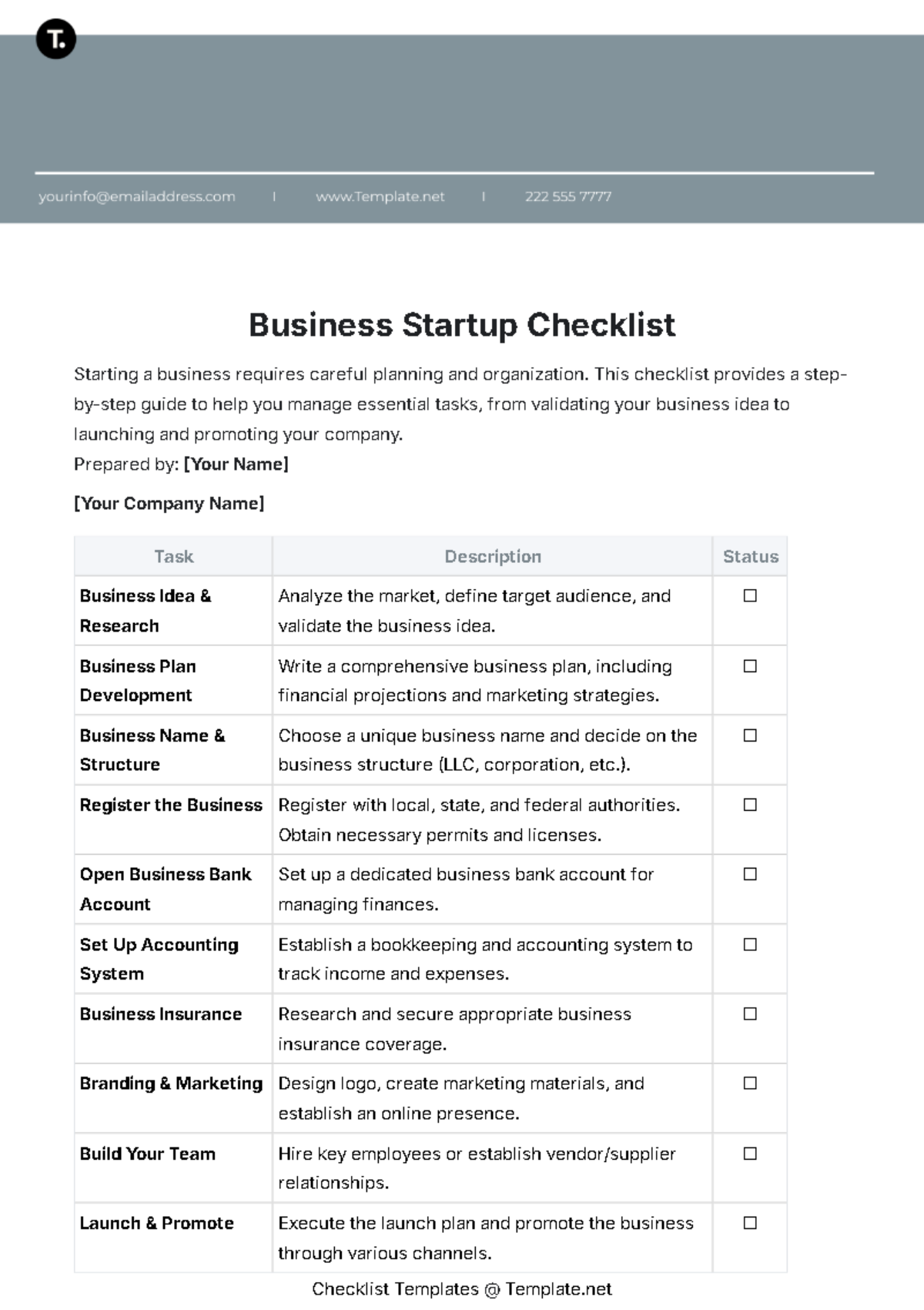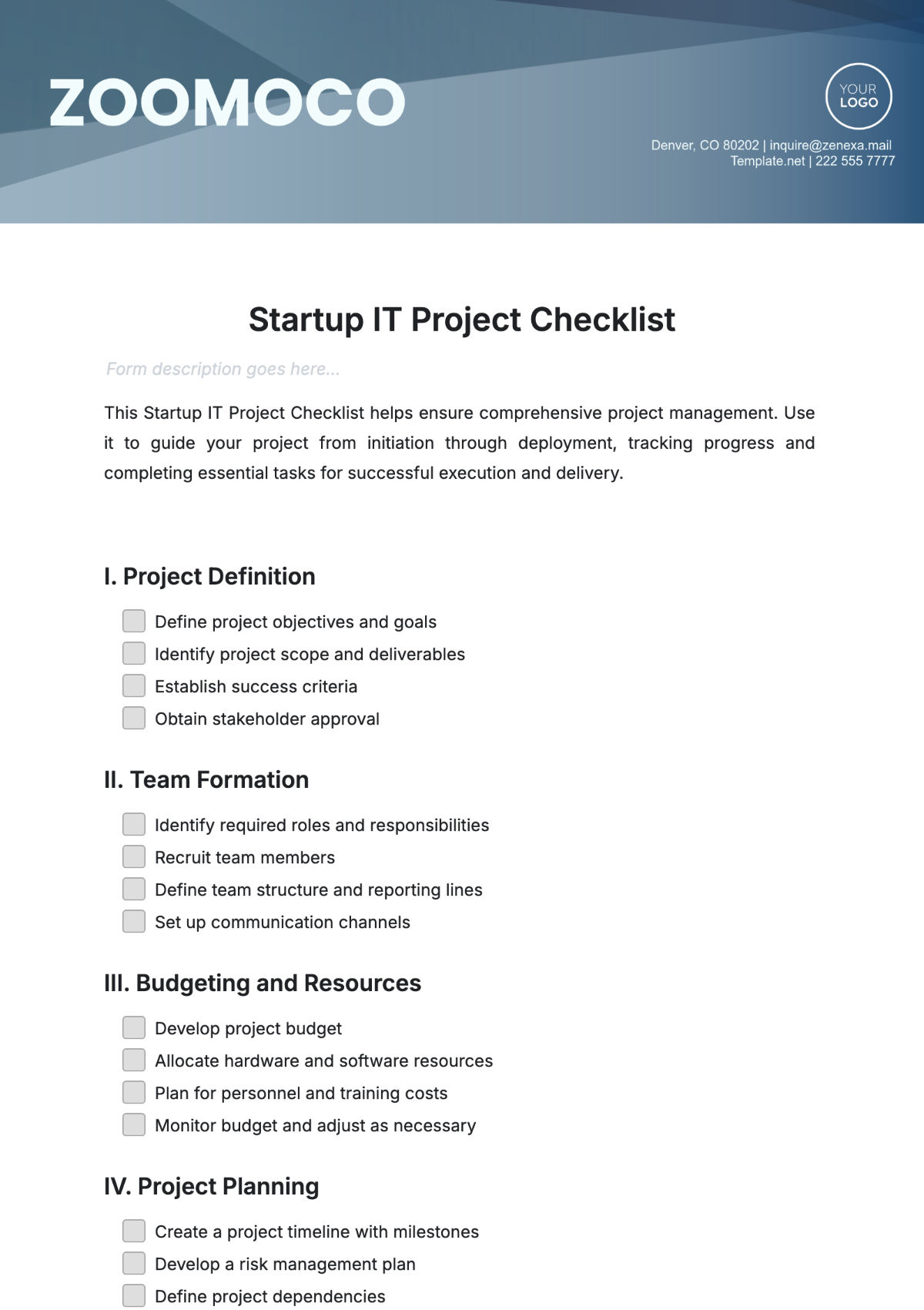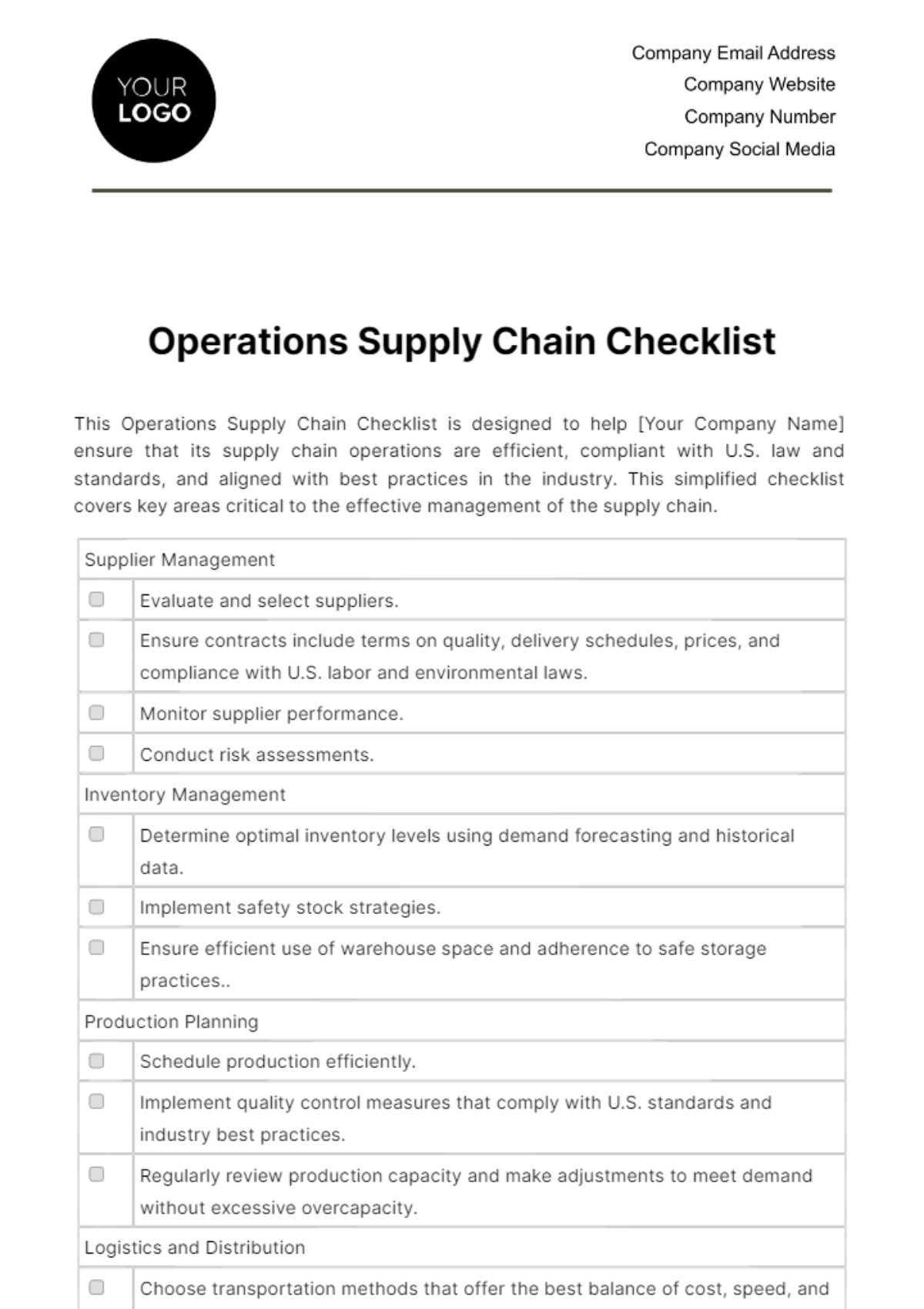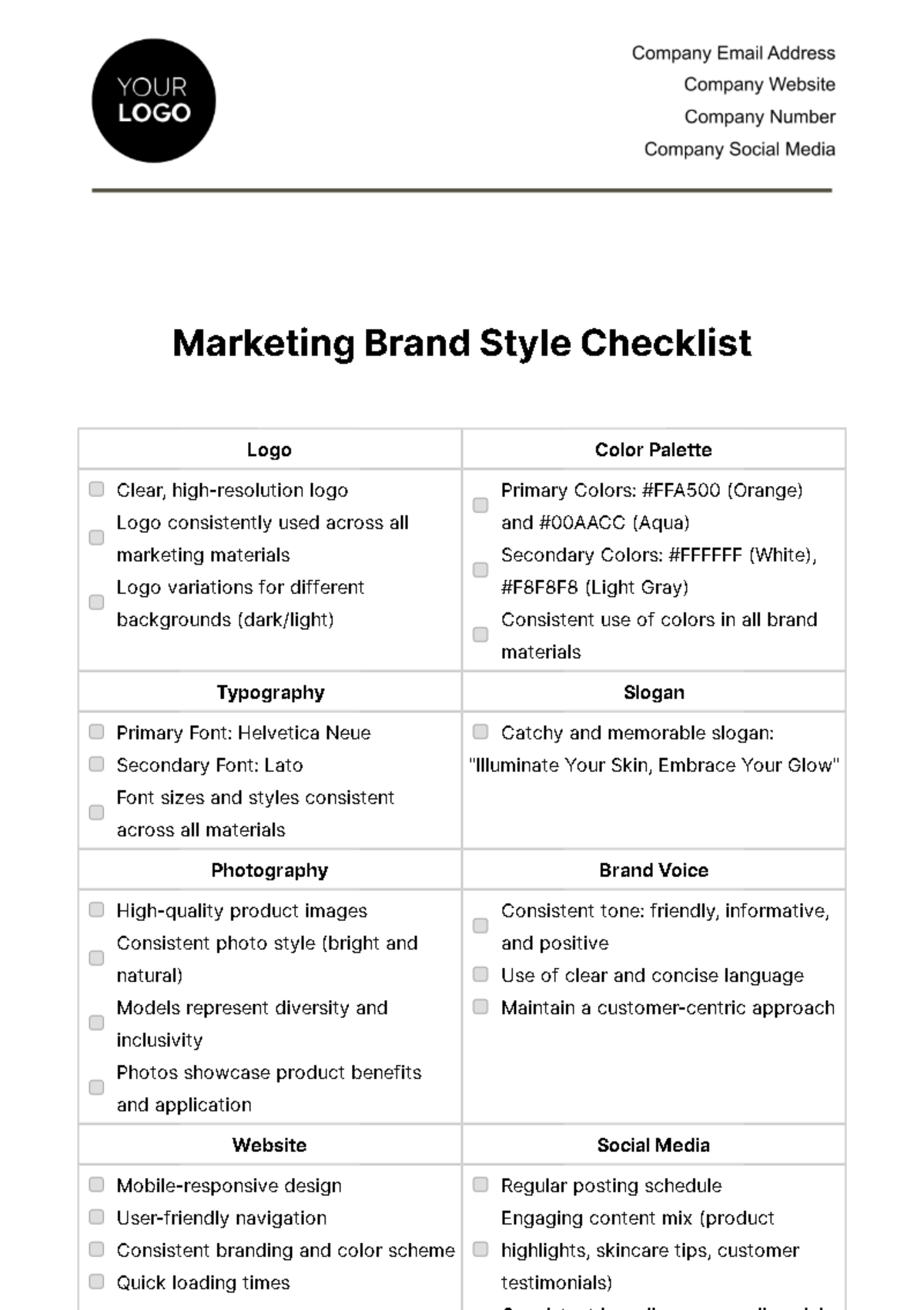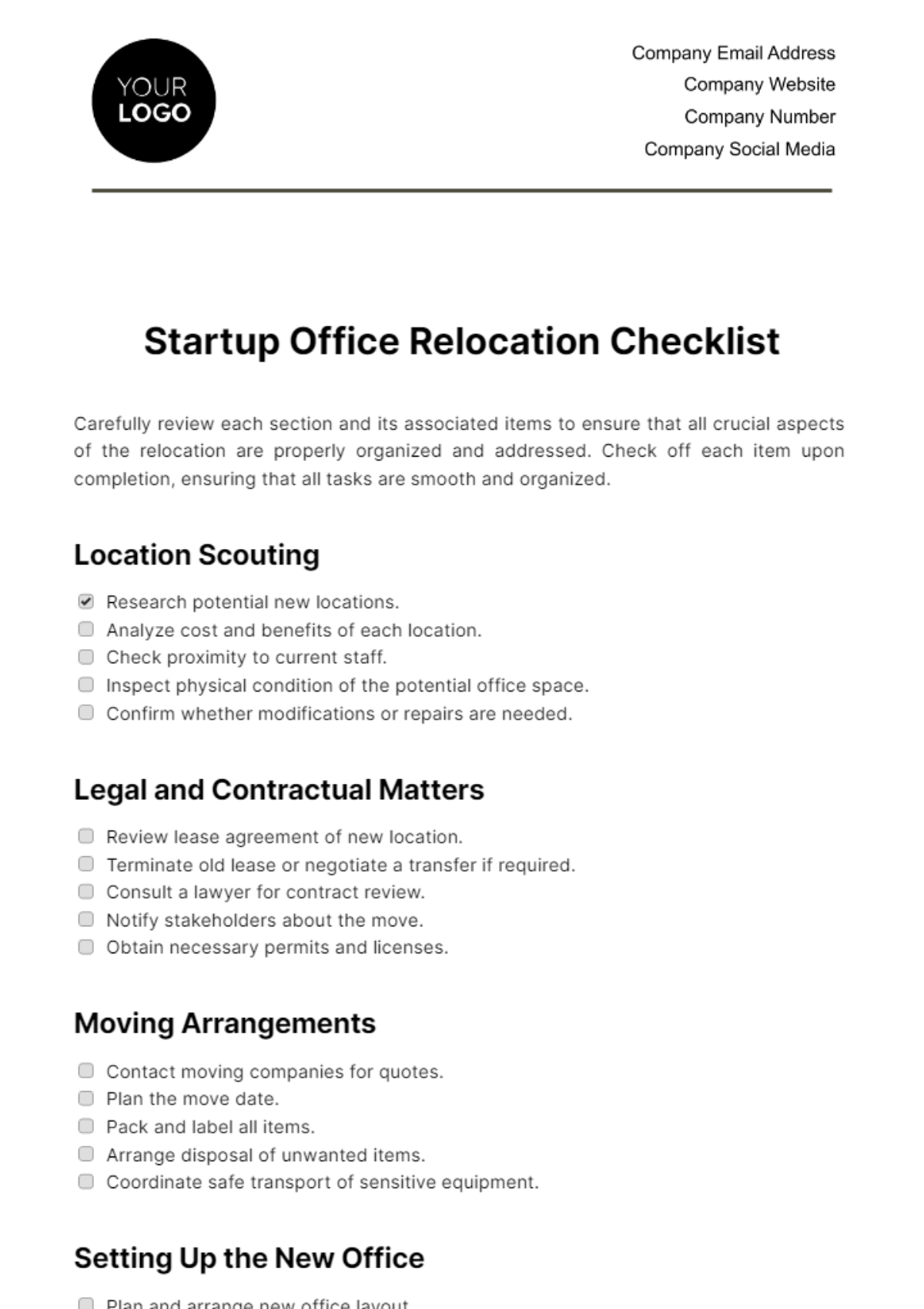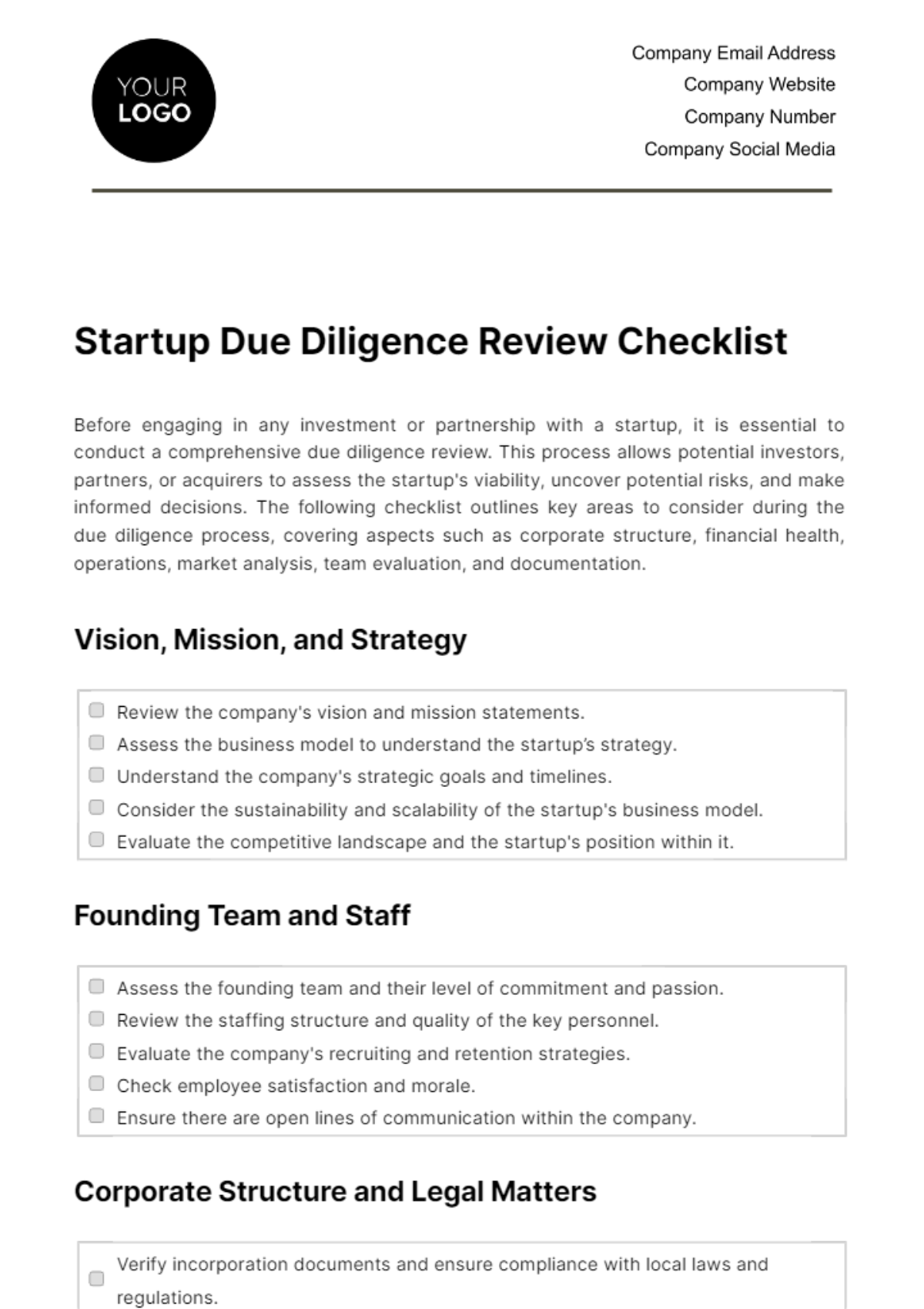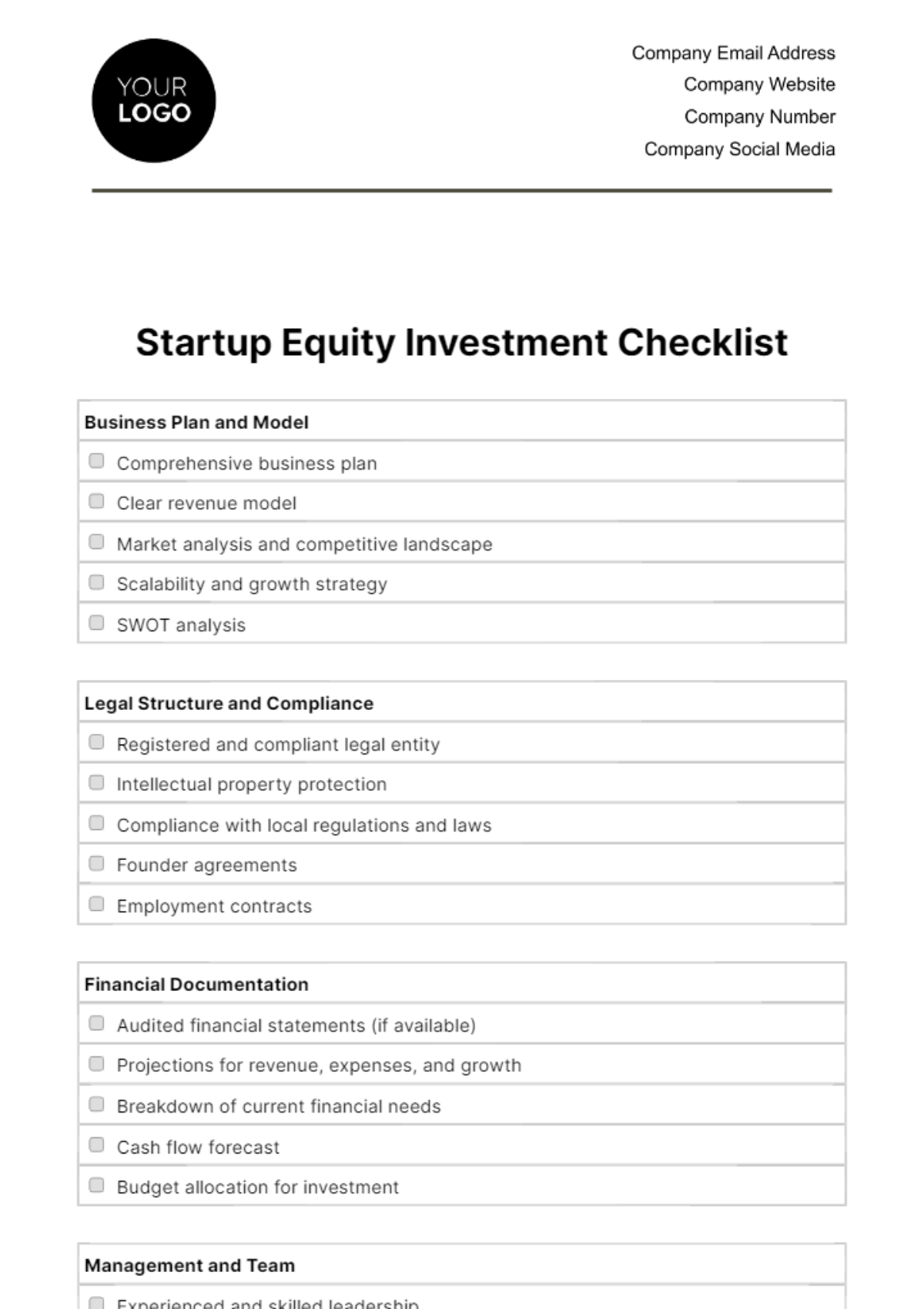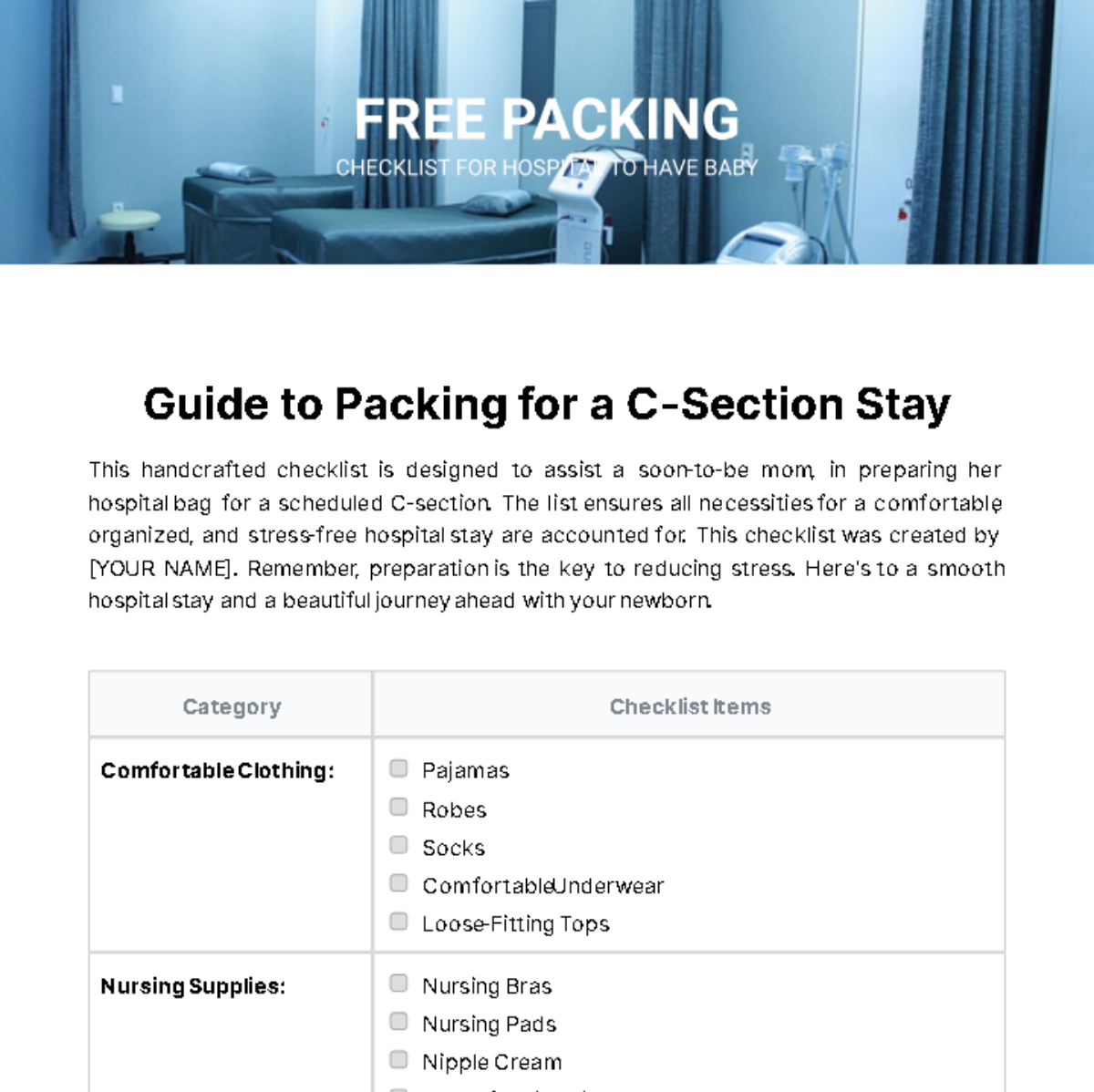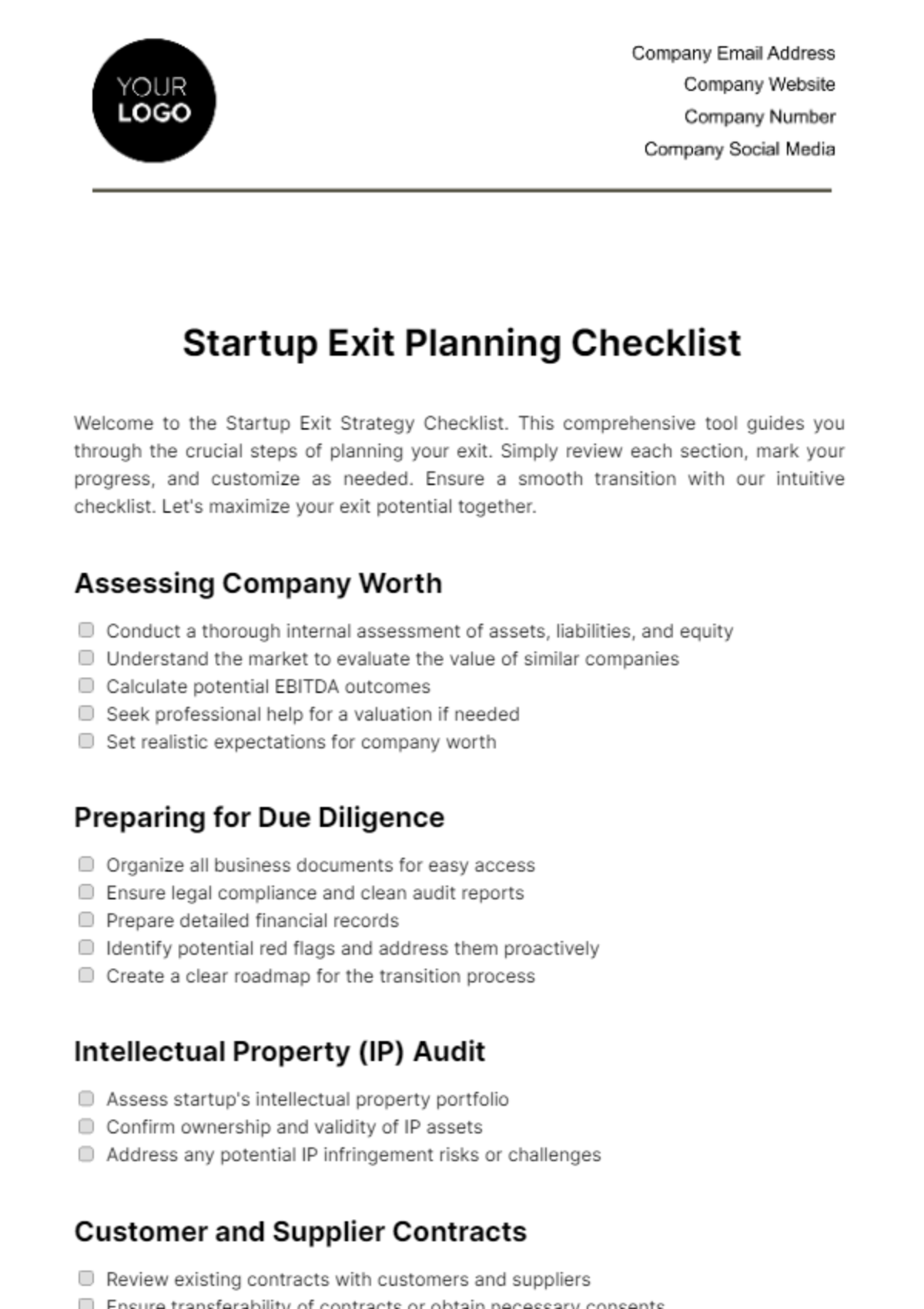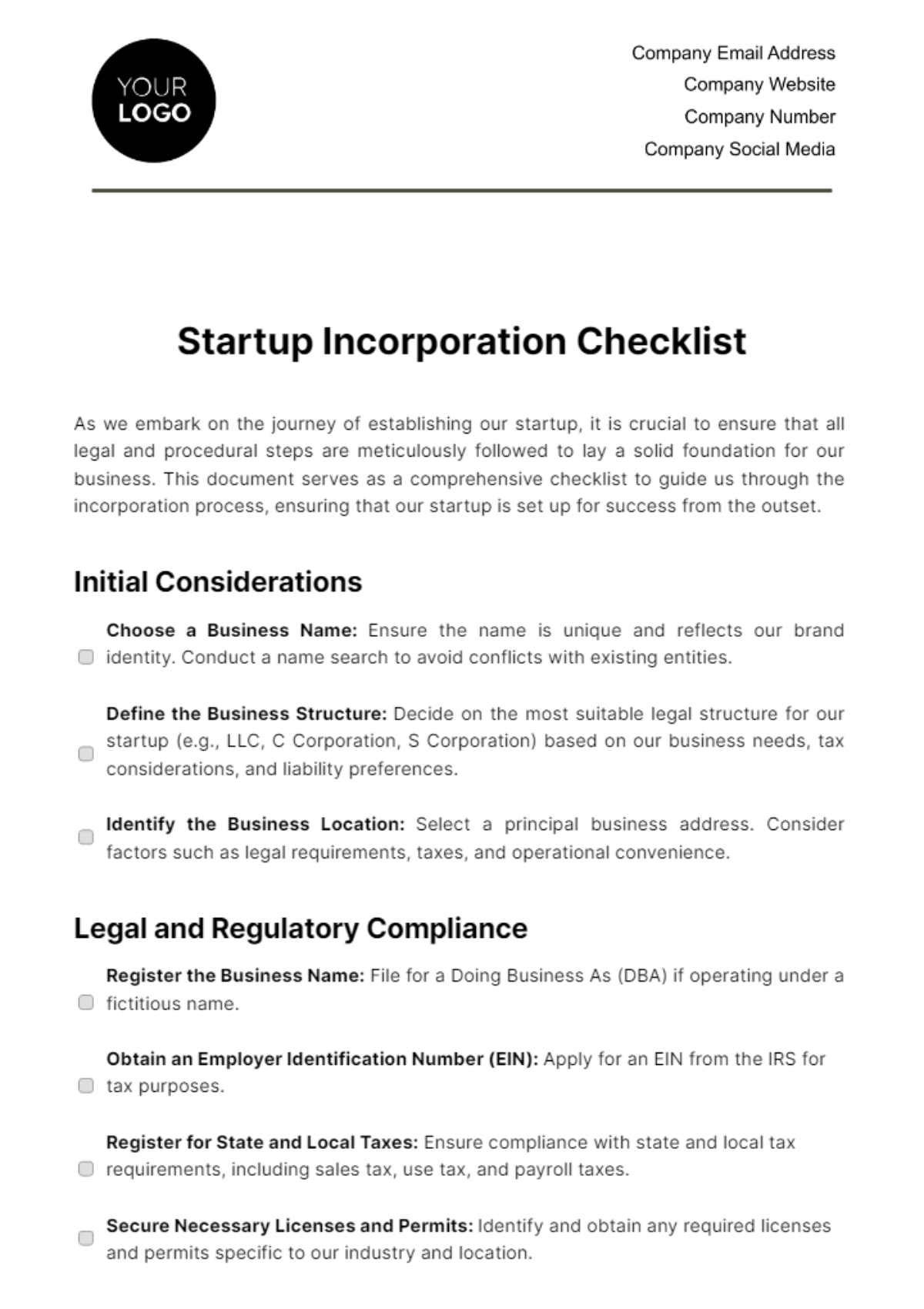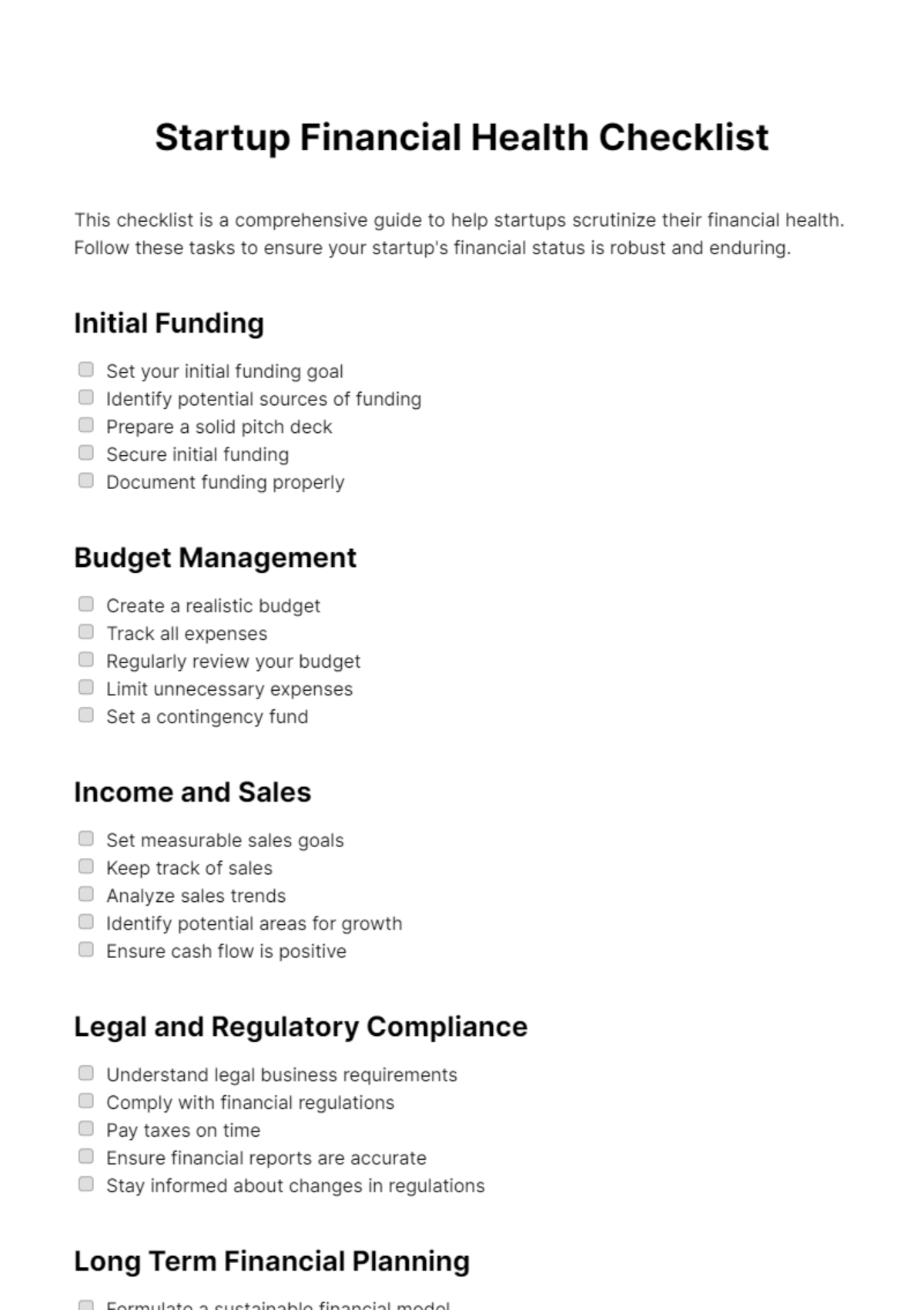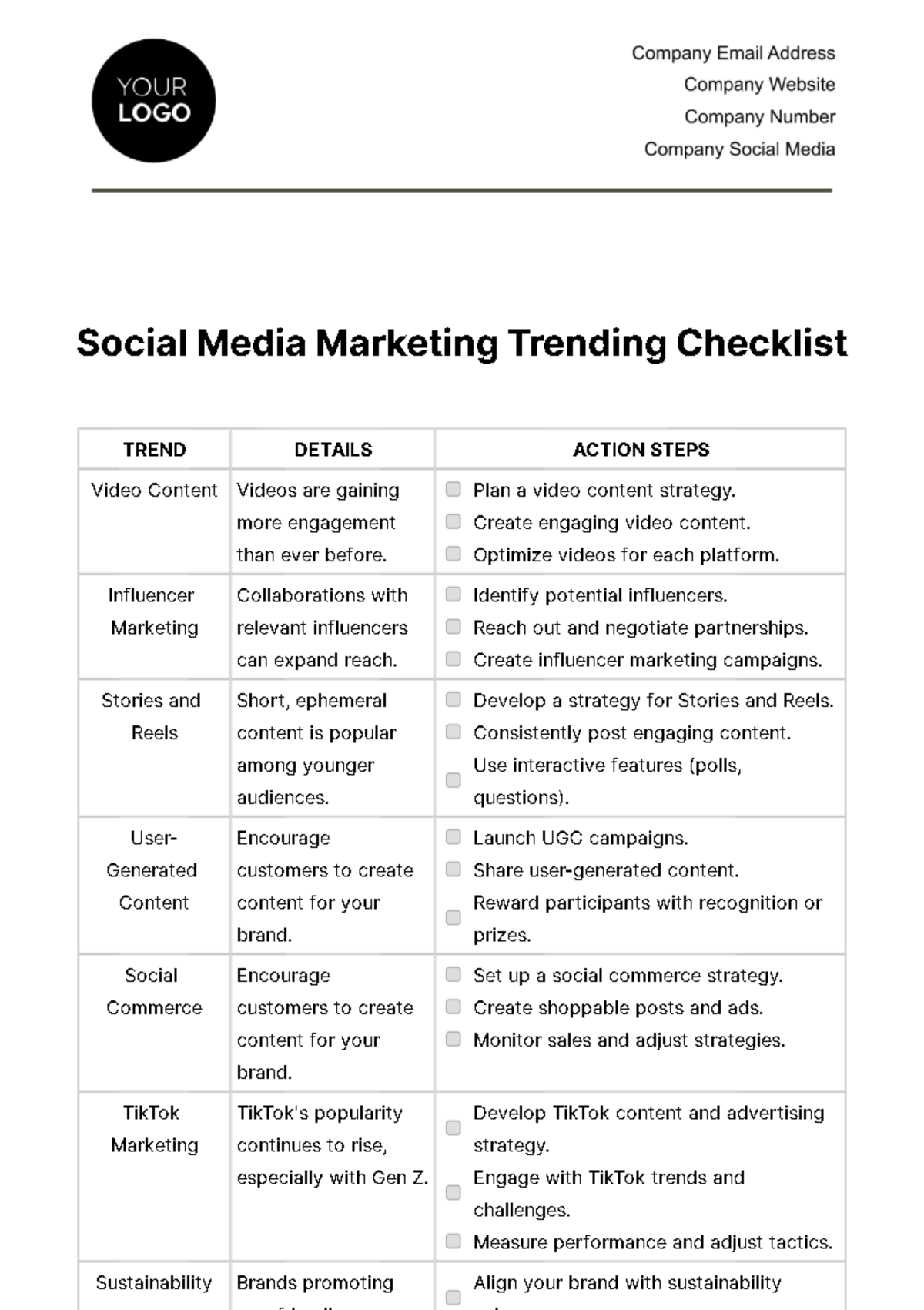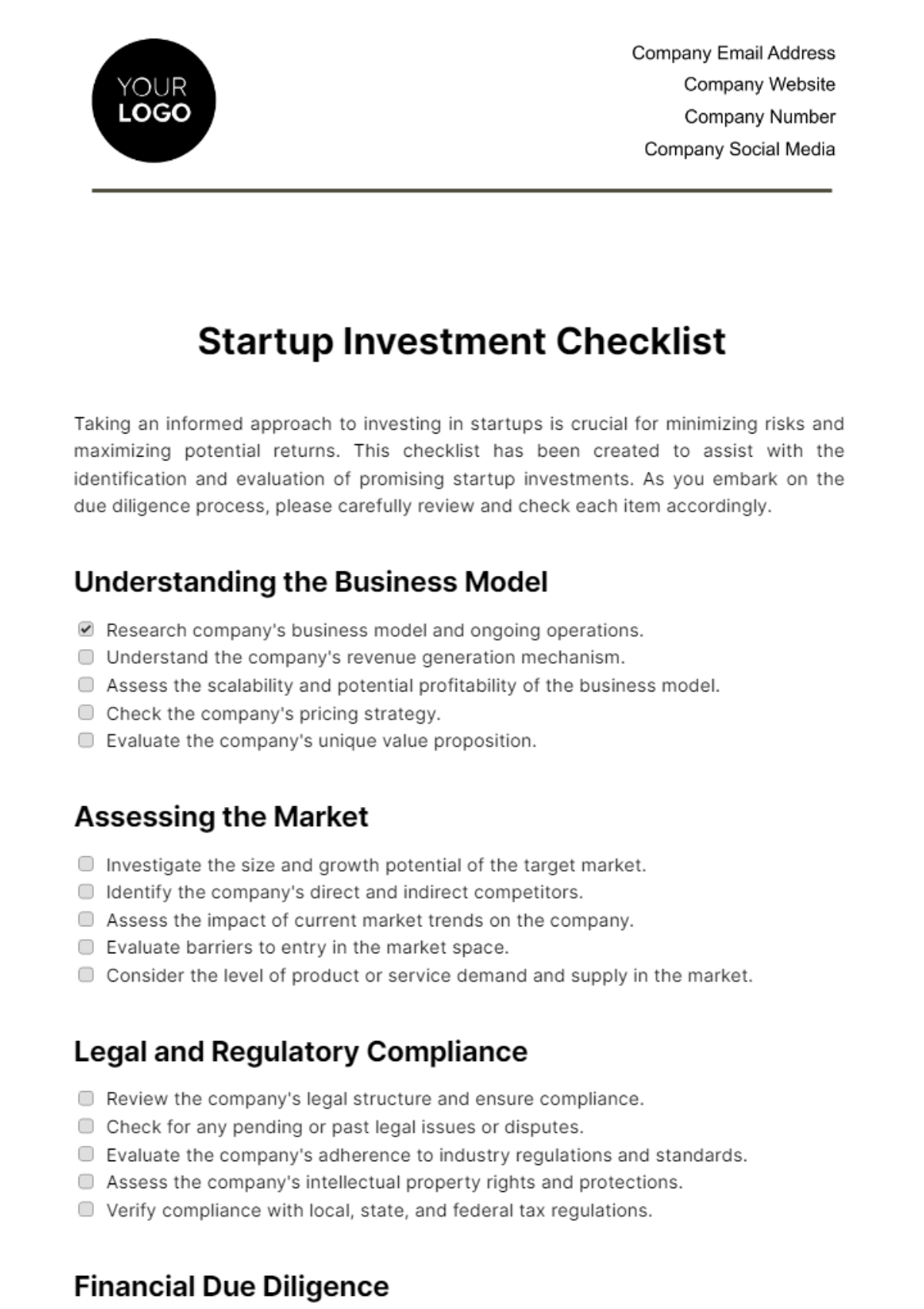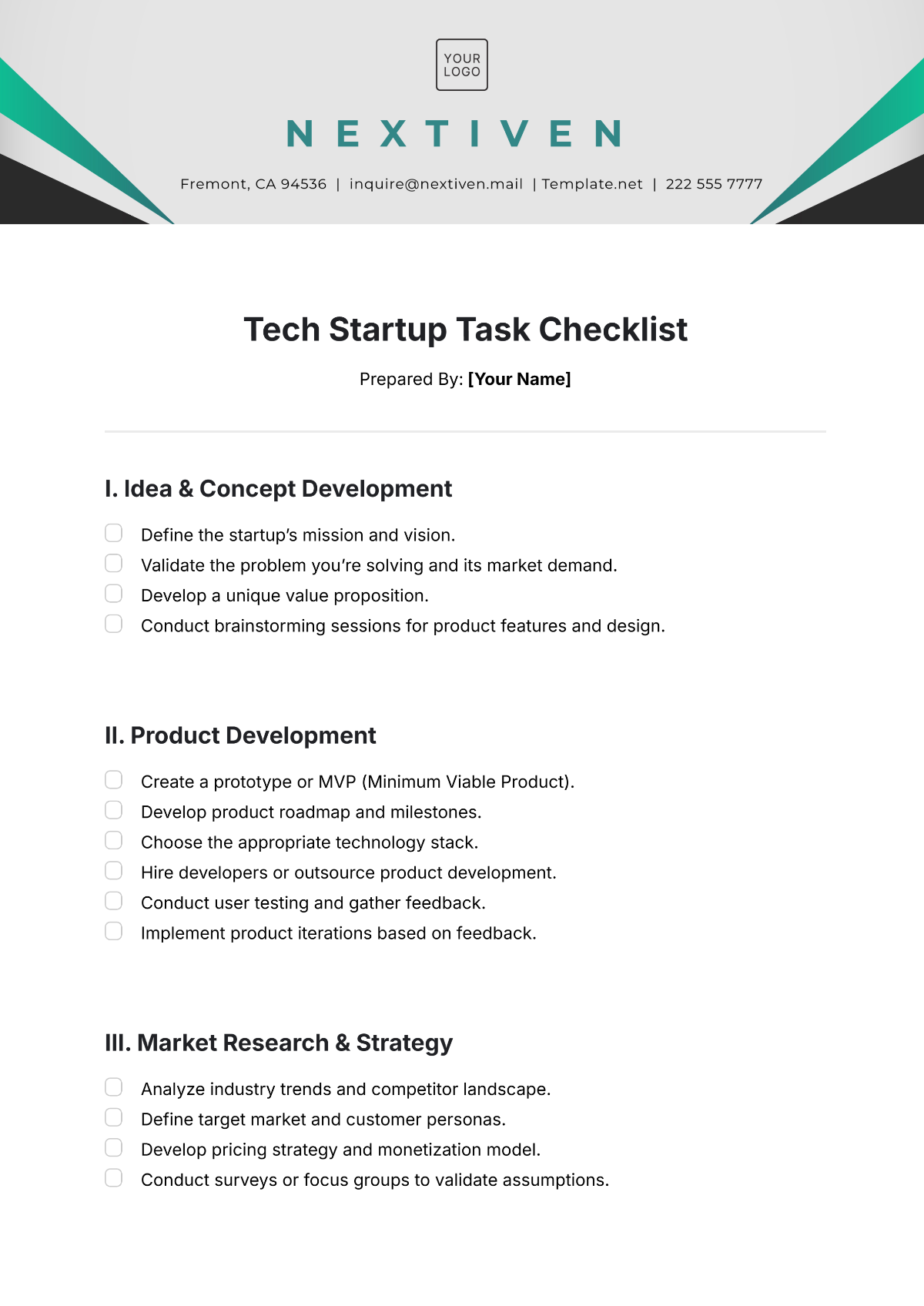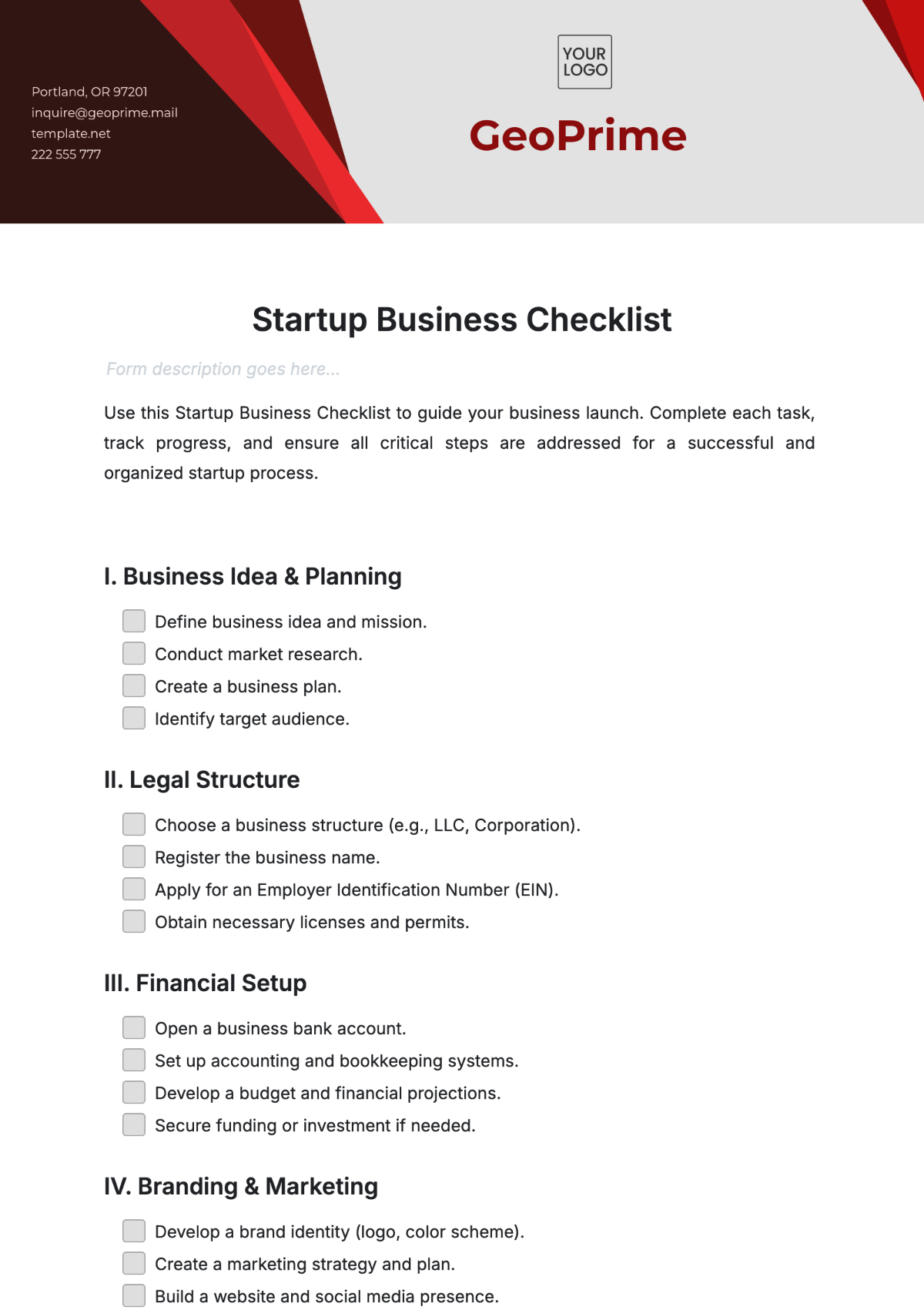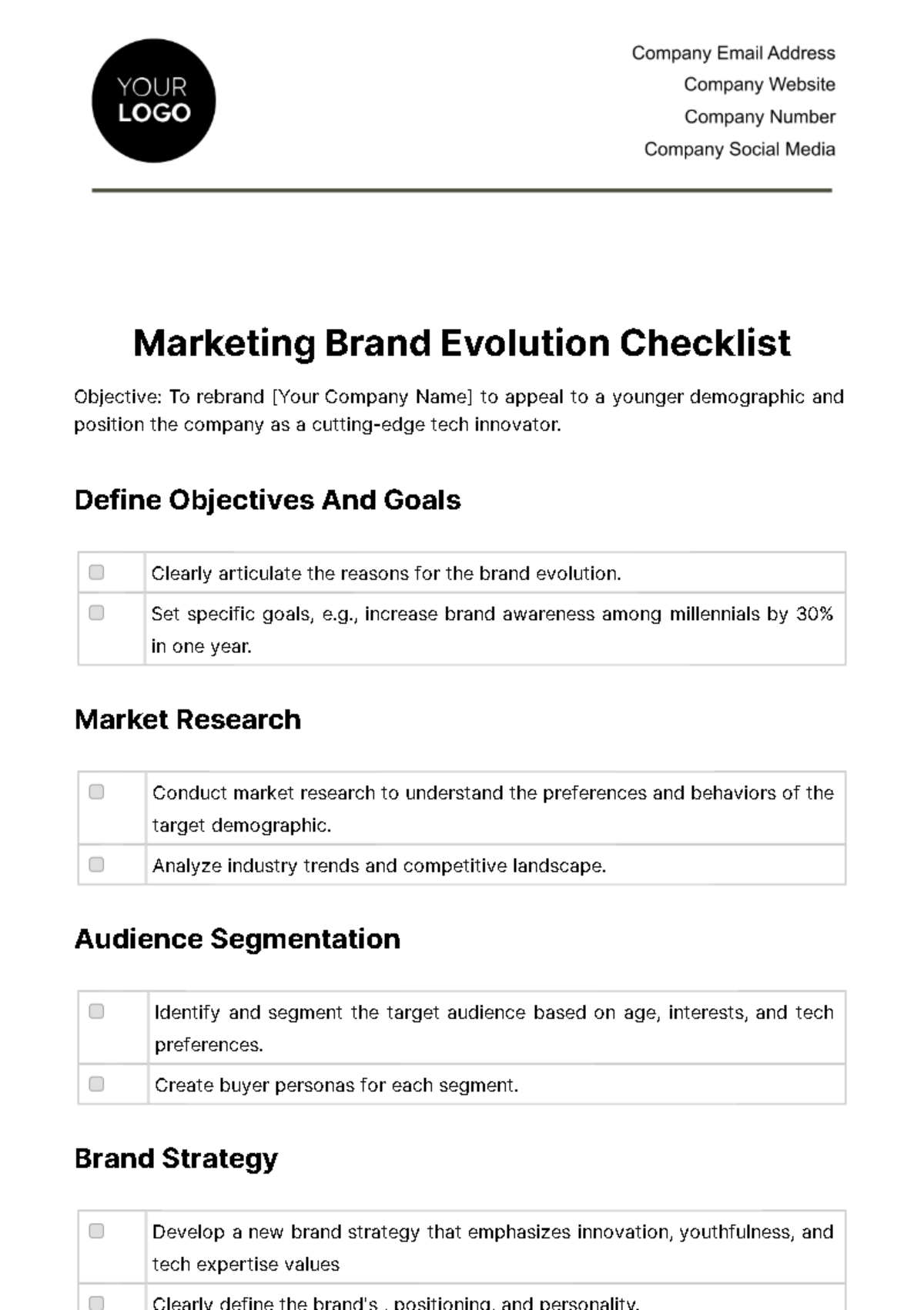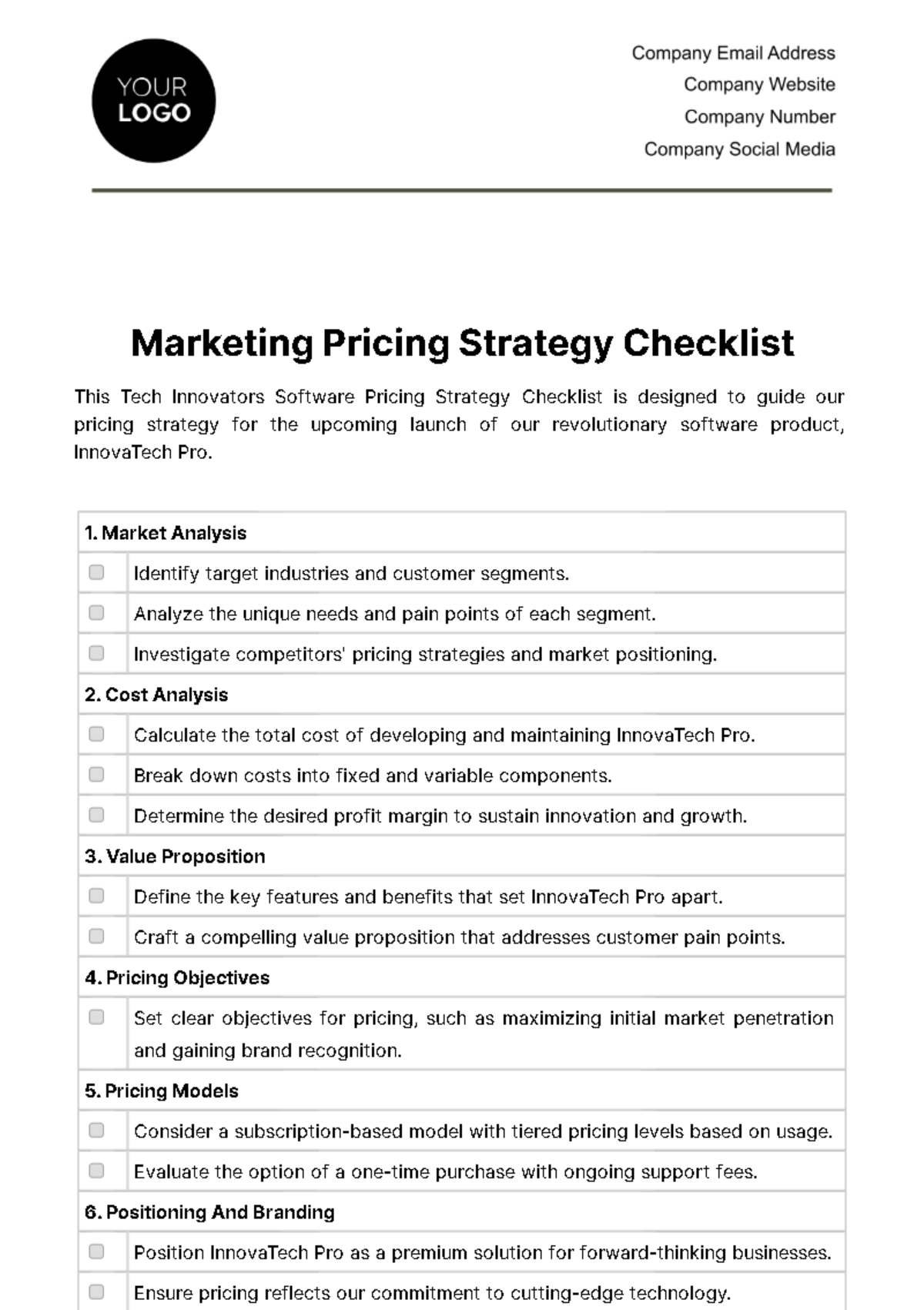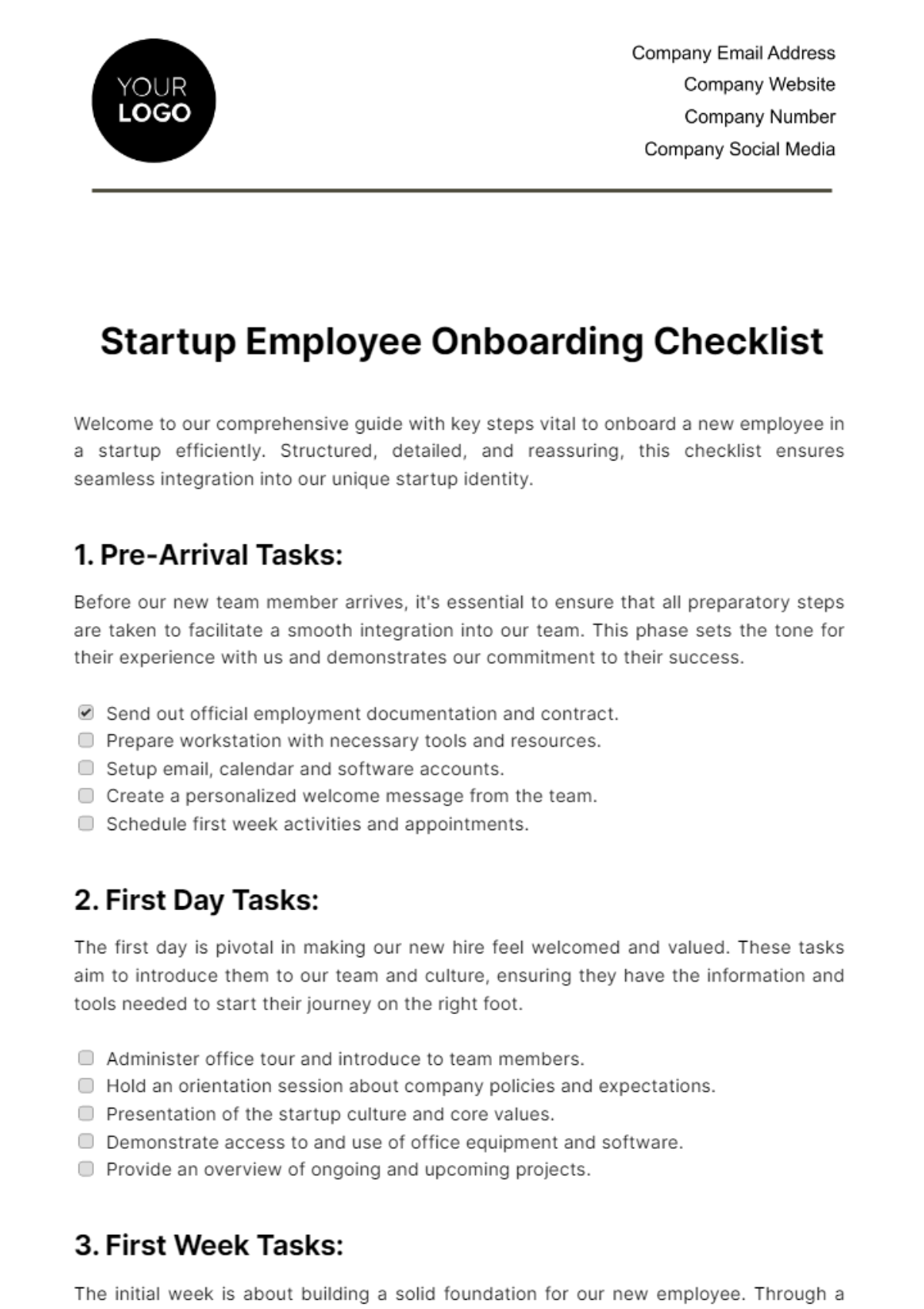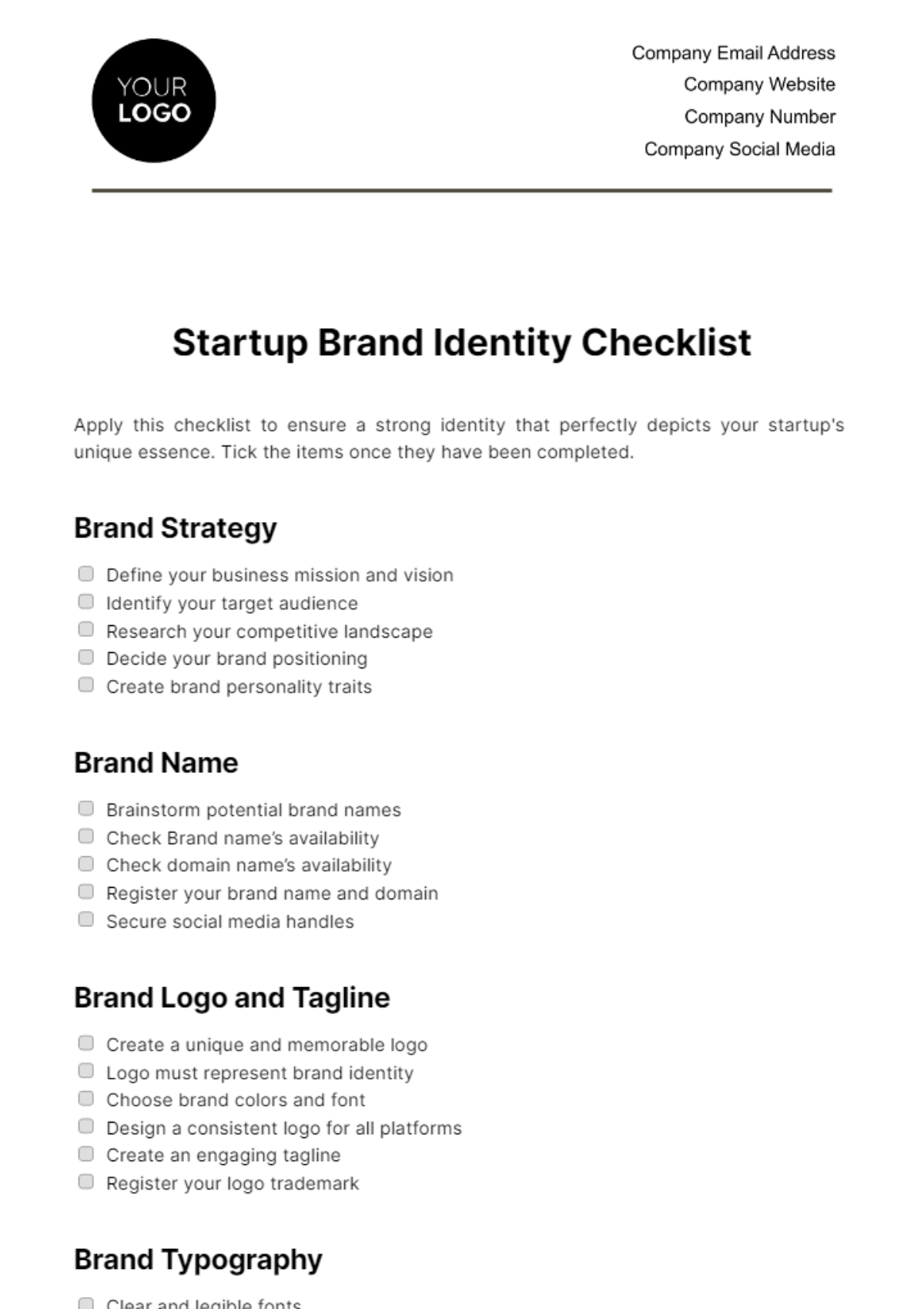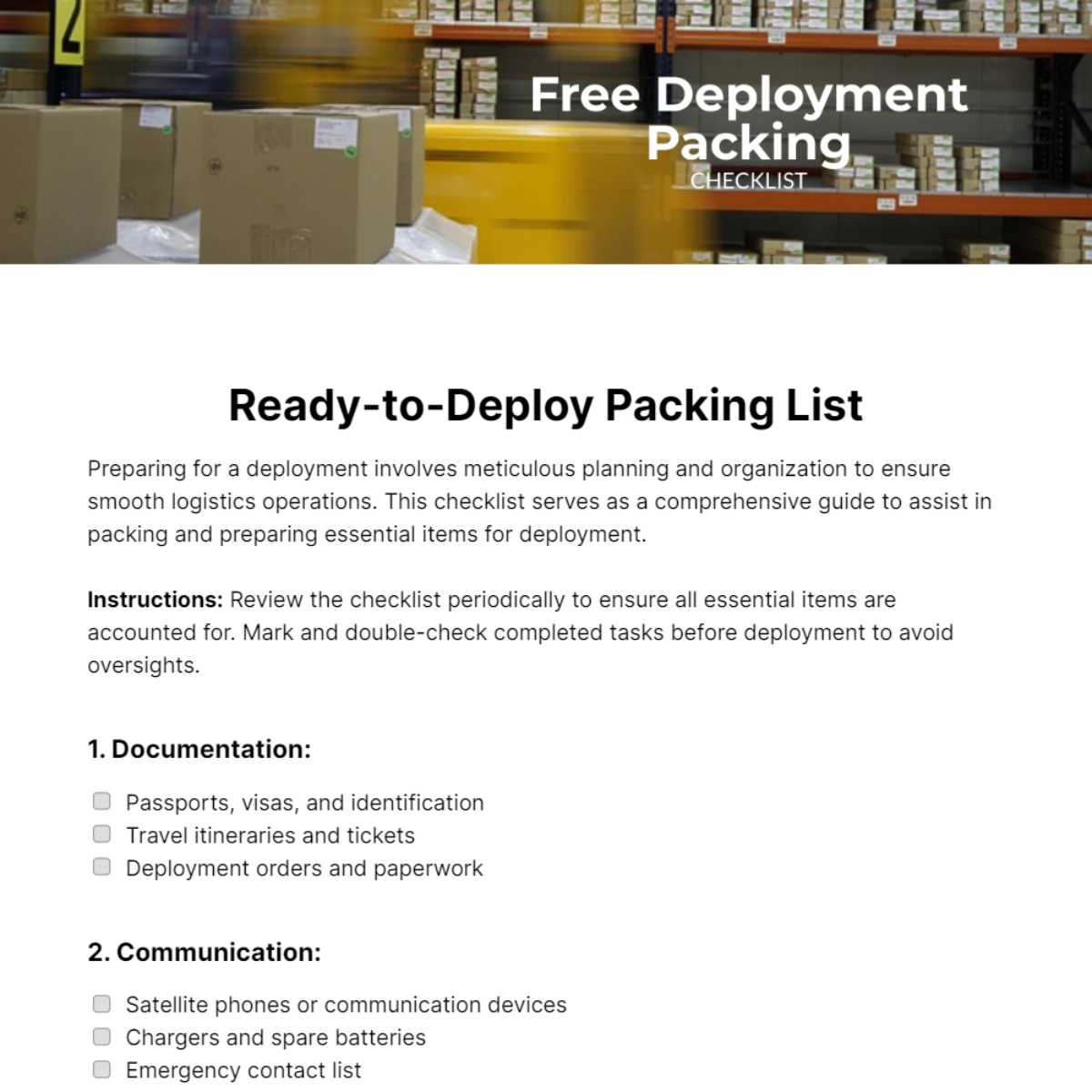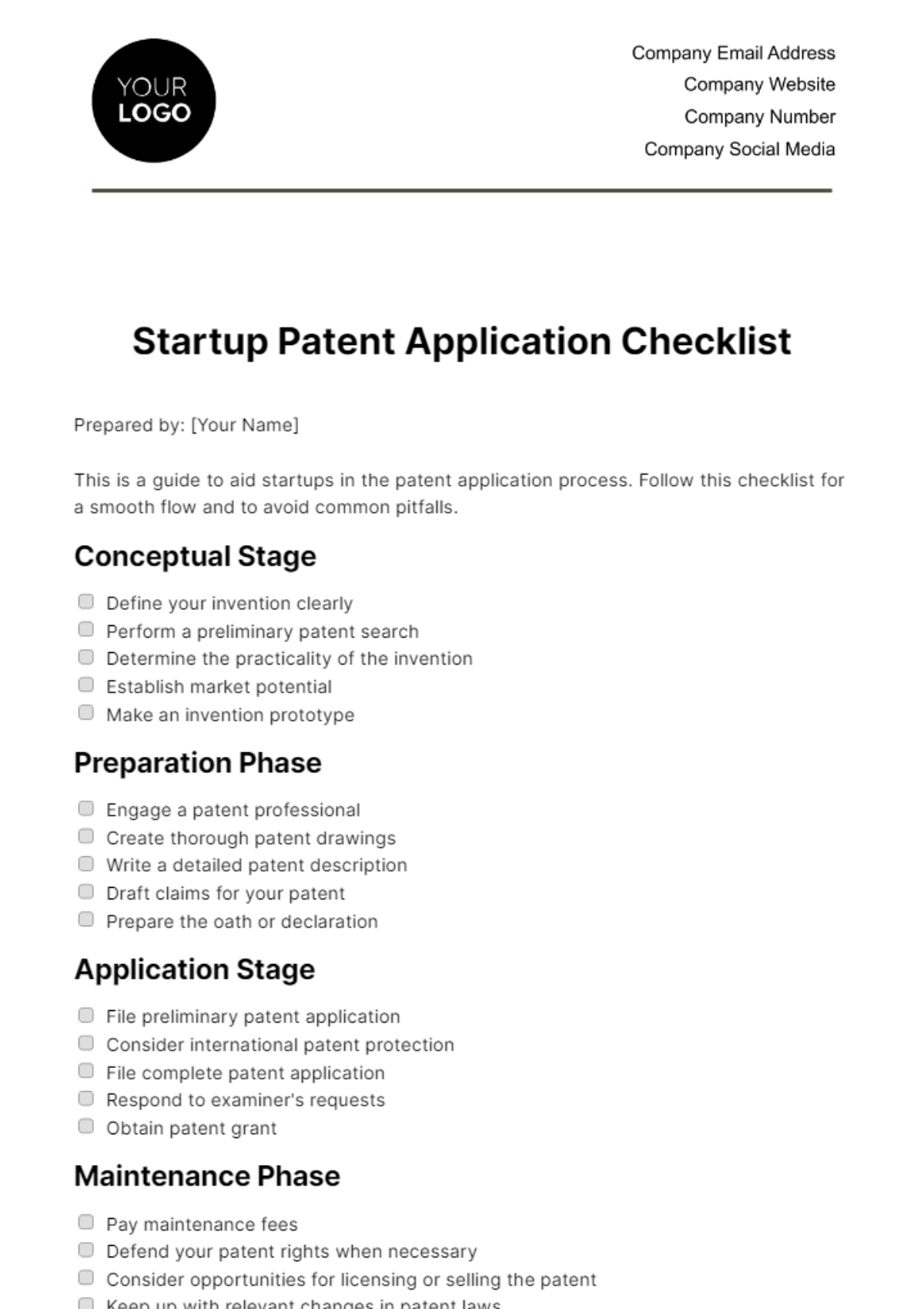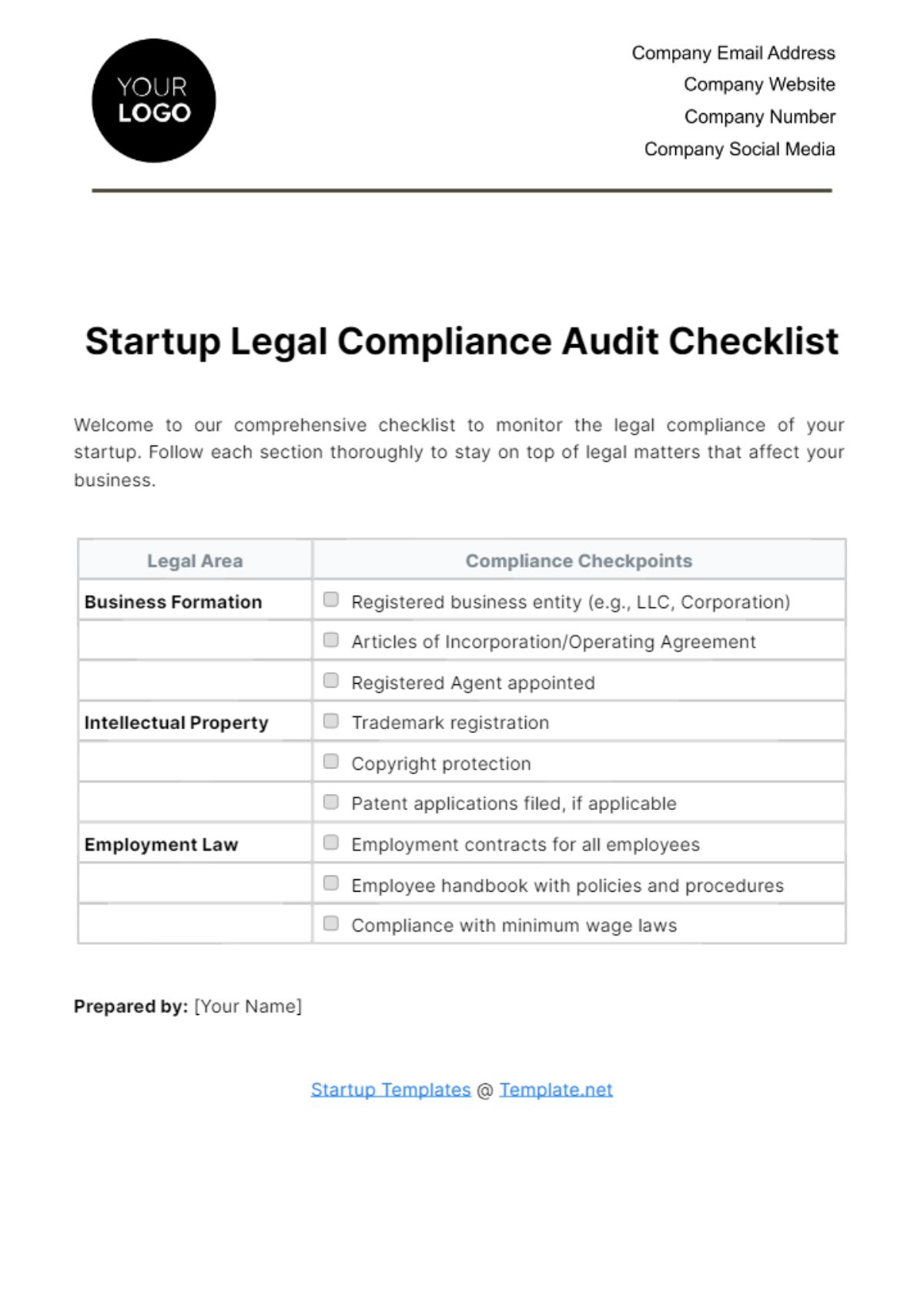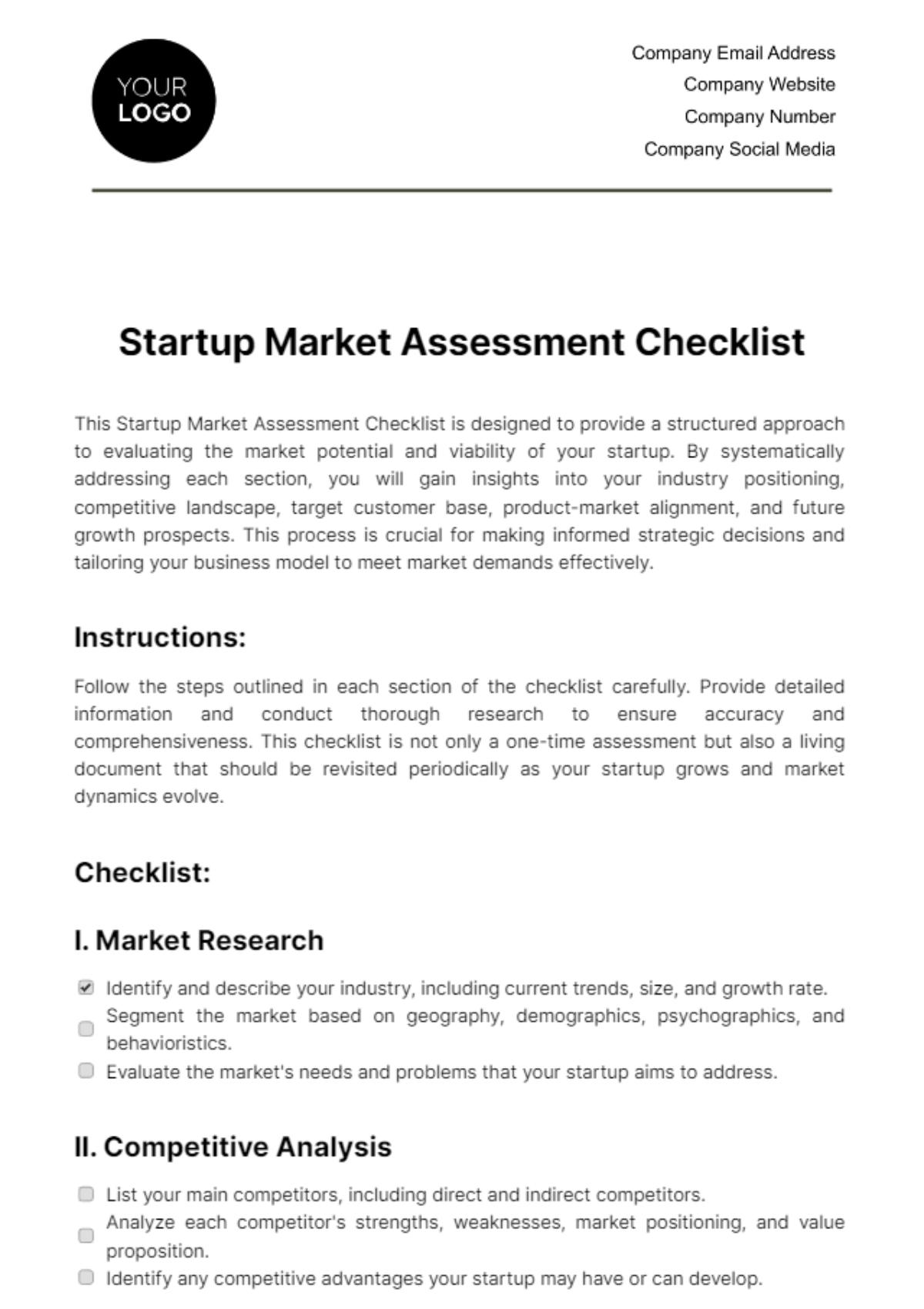Tech Startup Task Checklist
Prepared By: [Your Name]
I. Idea & Concept Development
Define the startup’s mission and vision.
Validate the problem you’re solving and its market demand.
Develop a unique value proposition.
Conduct brainstorming sessions for product features and design.
II. Product Development
Create a prototype or MVP (Minimum Viable Product).
Develop product roadmap and milestones.
Choose the appropriate technology stack.
Hire developers or outsource product development.
Conduct user testing and gather feedback.
Implement product iterations based on feedback.
III. Market Research & Strategy
Analyze industry trends and competitor landscape.
Define target market and customer personas.
Develop pricing strategy and monetization model.
Conduct surveys or focus groups to validate assumptions.
Create a detailed go-to-market plan.
IV. Financial Planning
Develop a business model and revenue projections.
Set up accounting systems (e.g., QuickBooks, Xero).
Secure initial funding (bootstrapping, venture capital, or crowdfunding).
Develop and monitor cash flow, expenses, and burn rate.
Prepare financial projections for the next 1-3 years.
V. Legal & Compliance
Register the business (choose legal structure: LLC, C-Corp, etc.).
Apply for EIN (Employer Identification Number).
Protect intellectual property (file for trademarks, patents, copyrights).
Draft and finalize contracts (founder agreements, employee contracts, NDA).
Ensure compliance with data privacy laws (GDPR, CCPA).
VI. Team Building
Define key roles and responsibilities.
Recruit co-founders, developers, marketers, etc.
Set up HR systems (payroll, benefits, onboarding).
Foster a company culture and core values.
Conduct team training and development.
VII. Launch & Marketing
Create and optimize a company website.
Build and manage social media profiles.
Develop a brand identity (logos, color scheme, messaging).
Plan and execute an initial marketing campaign (e.g., email, social media, PR).
Launch the product to early adopters or beta testers.
Measure and analyze campaign results (use tools like Google Analytics).
VIII. Operations & Growth
Set up business operations (CRM, project management tools).
Implement a customer support system (helpdesk, live chat).
Focus on customer acquisition and retention strategies.
Continuously optimize products based on user feedback.
Scale infrastructure and operations to handle increased demand.
Monitor KPIs and make data-driven decisions for growth.
